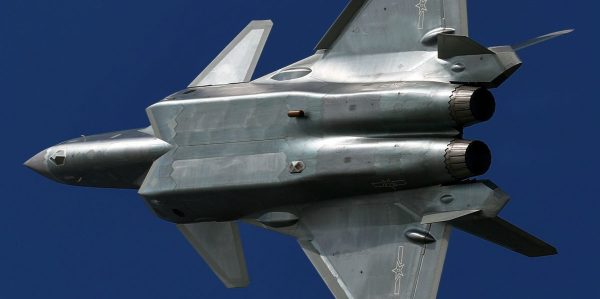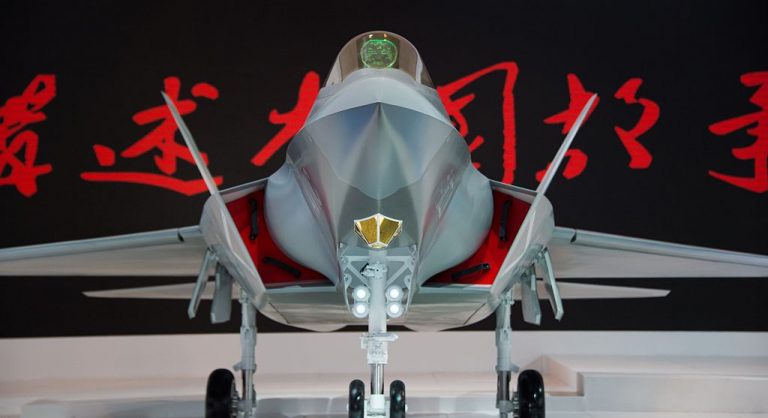When in 1949, the Chinese Communist Party (CCP) seized power in mainland China, the country, after a long-fought civil war, was devoid of the means to build up its economy, let alone create a military power that could in any way compete with the U.S. or the Russians. It, therefore, developed a long-held tradition of buying, borrowing, or stealing, warring technology, and, as it turns out, the CCP was very skillful in obtaining it by espionage.
Below are five cases wherein, at least to a major extent, the CCP have borrowed, copied, or stolen technological weaponry from either the U.S. or Russia, as outlined in an article published by 19fortyfive.com.
In 1961, in order to ease the troubles between the USSR and China, the Soviets capitulated to China and offered them the blueprints for their latest MiG-21 interceptor-jet fighter.
The Chinese readily accepted the offer but were not the most grateful clients. They virtually copied the MiG-21s, renamed them to J-7, and started to sell their newly acquired military plaything to other countries, whilst Sino-Soviet relations further deteriorated. The J-7 sellout was especially successful, most notably to the United States who used the model for mimicking Soviet enemy fighters during training drills.

Only after a weapons embargo was imposed on China by the West following the Tiananmen Square massacre in 1989 and after the Soviet Union’s collapse did mutual dependency lead to a renewed reconciliation between the former communist giants.
Success
You are now signed up for our newsletter
Success
Check your email to complete sign up
China needed high-profile technological warfare to prop up its military ambitions and crushed self-esteem and to establish itself as a major player on the global stage.
Russia in turn, needed money and a market for dumping its superfluous military arsenal now that the Cold War had come to an end.
Hence, the 1990s saw a lively one-way army trade from Russia to China. One major transaction deal was when the Chinese obtained the licensing, and technology for the Su-27 “Flanker” multirole fighter, which provided the Chinese with a state-of-the-art aggressive fighter jet.
Once again, the Chinese proved to be an unreliable business partner by violating the terms of their agreement with Russia by installing their own avionics on the J-11, as they called it. They also developed a carrier-based version of the plane, much to the dismay of the Russians. As a result, the good nature between the former comrades sunk.
China’s development gave the Americans aviation technology to spy on. Even for experts, it was hard to tell the difference between a Chinese J-31 stealth-fighter and an American-made twin-engine F-35. One thing is for sure; the Americans had theirs first.
A similar thing happened in the drone industry. In 2010, China was still at an elementary level of understanding of Unmanned Aerial Vehicle (UAV) technology. Nowadays, its latest toy, the Caihon, to the untrained eye, appears to be a copycat of the U.S.-made Reaper; only its technical performance lags way behind the American’s Reaper.
After the Vietnam war, the U.S. decided to double-down on night vision technology which paid off. It gave them a huge strategic advantage over their competitors and proved very helpful in many conflicts during the 1980s, however, this advantage did not last long. Since then, China has made great strides in catching up with the Americans in this respect, however, U.S. intelligence says China’s giant leap forward was propelled by espionage alone.
Even though the U.S. has made some progress in stemming the sell-out of sensitive information to overly enthusiastic CCP operatives and spies, it’s a mission impossible, given the extensive commercial contacts between China and the United States.
READ MORE: Chinese Spy Caught and Convicted for Plotting to Steal US Aviation Trade Secrets
Vision Times reported, on Nov. 5, a federal court in Cincinnati sentenced a Chinese intelligence officer for planning to steal sensitive aviation trade secrets.
At the time, Assistant Director Alan E. Kohler Jr. of the FBI’s Counterintelligence Division said in a statement “This was state-sponsored economic espionage by the PRC designed to steal American technology and put Americans out of work… For those who doubt the real goals of the PRC, this should be a wake-up call; they are stealing American technology to benefit their economy and military.”














